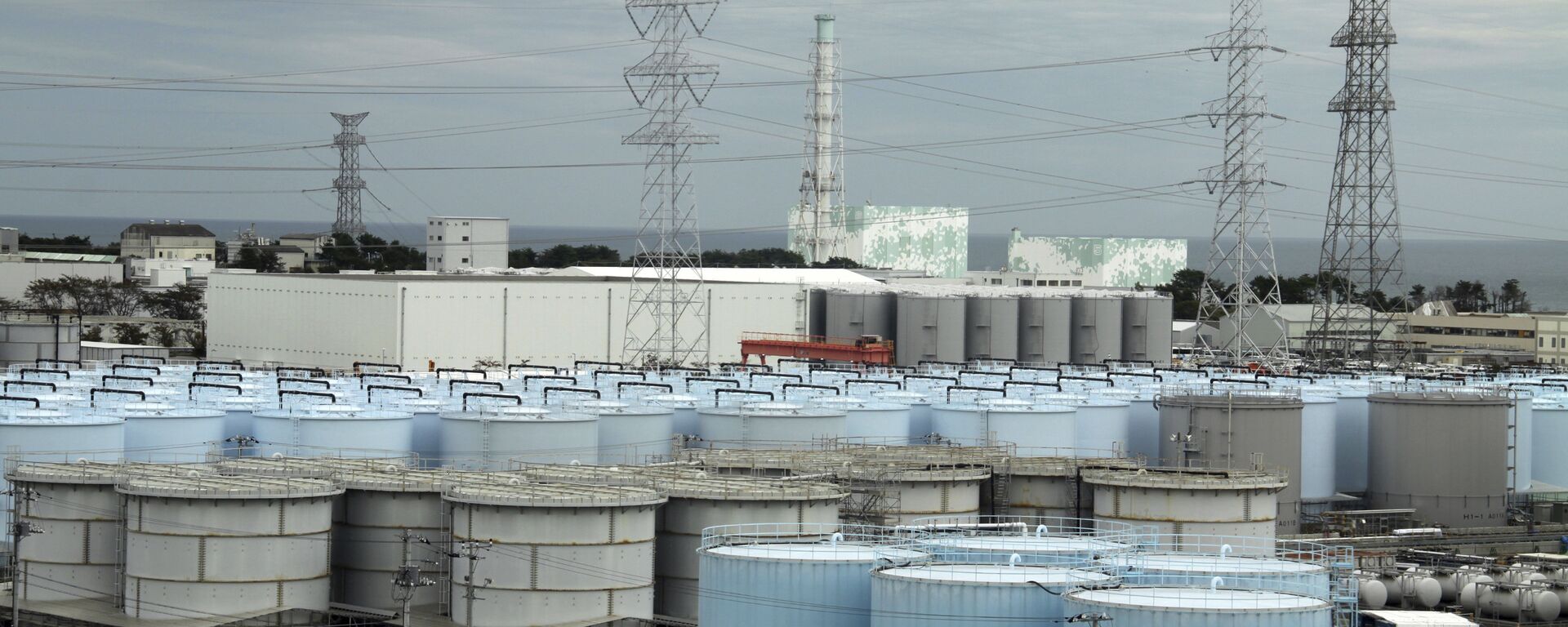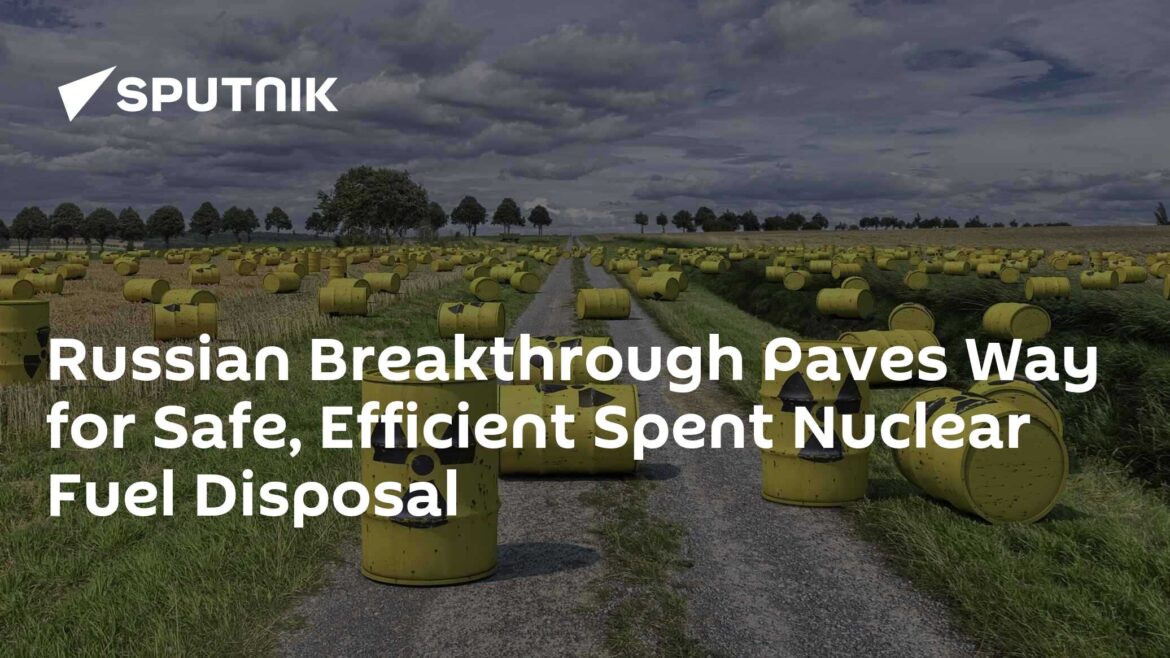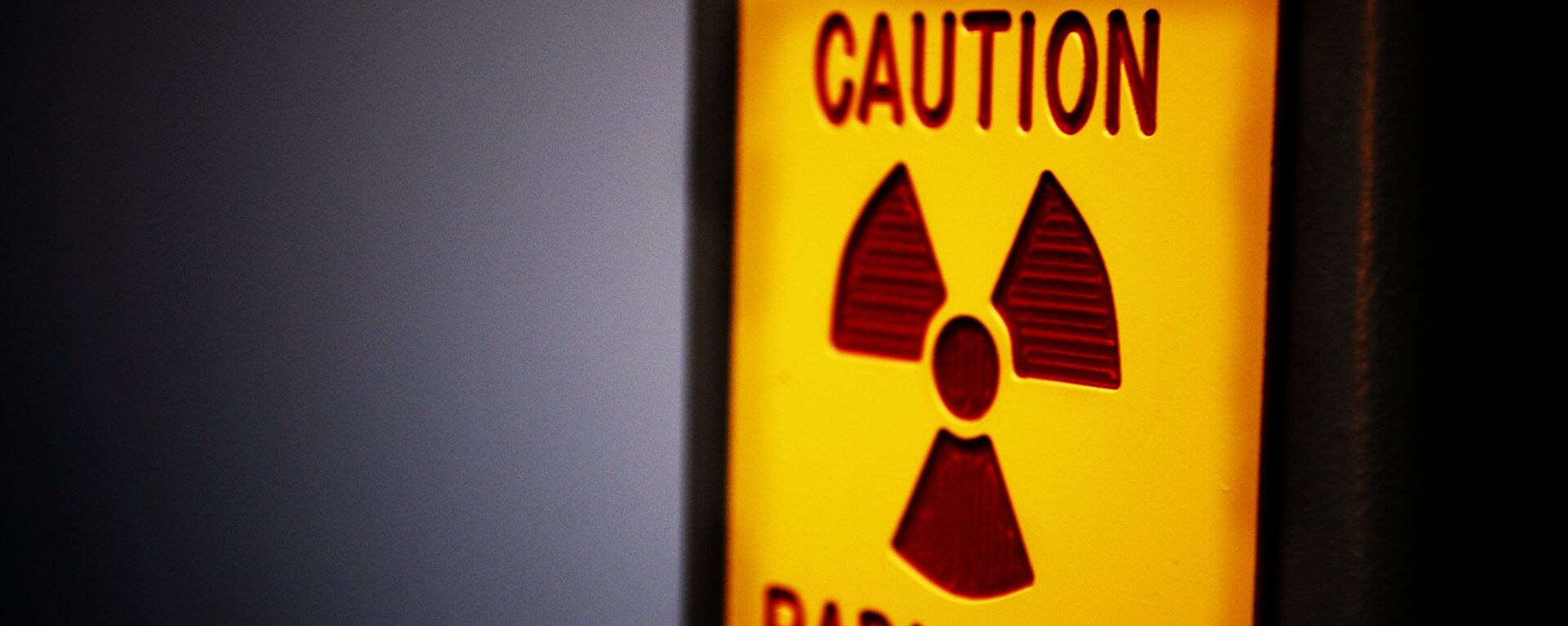Table of Contents
https://sputnikglobe.com/20250715/russian-breakthrough-paves-way-for-safe-efficient-spent-nuclear-fuel-disposal-1122443089.html
Russian Breakthrough Paves Way for Safe, Efficient Spent Nuclear Fuel Disposal
Russian Breakthrough Paves Way for Safe, Efficient Spent Nuclear Fuel Disposal
Sputnik International
The issue of spent nuclear fuel (SNF) disposal continues to pose significant challenges globally. In Russia alone, approximately 650 tons of radioactive waste are unloaded annually from nuclear power plant reactors.
2025-07-15T12:11+0000
2025-07-15T12:11+0000
2025-07-15T12:11+0000
rosenergoatom
russia
fukushima
rosatom
nuclear waste
nuclear
nuclear sites
nuclear technology
nuclear reactor
nuclear plant
https://cdn1.img.sputnikglobe.com/img/104412/72/1044127232_78:0:1842:992_1920x0_80_0_0_a14a92edd864aab6f129af65f8c22fad.jpg
Most of this waste is simply buried, with only around 15% being reprocessed. However, scientists from St. Petersburg have developed a groundbreaking technology for reprocessing spent nuclear fuel (SNF) and deactivating nuclear power plant components, including irradiated reactor graphite—a material that has become a significant global obstacle to the advancement of nuclear energy. To provide more insight, Dr. Anna Petrovskaya, a candidate of physical and mathematical sciences and the head of the research team behind this innovative technology, explained the details of the process.Tackling the Current DilemmaSpent nuclear fuel continues to pose a significant challenge for nations operating nuclear power plants. As Dr. Petrovskaya explains, one of the primary concerns is the staggering volume of SNF accumulated over the years, creating complex issues for safe management and long-term disposal.The existing technologies for reprocessing SNF, she adds, are inadequate, as the most commonly used radiochemical methods produce large volumes of secondary liquid radioactive waste and require multi-stage processes to separate up to 40 different chemical elements from the spent fuel. These processes are both costly and time-consuming.The Burial ProblemAlthough burial is often considered a solution, Dr. Petrovskaya argues that it is merely a «deferred problem.» A Unique Solution: Ion-Plasma TechnologyThe breakthrough technology developed by Dr. Petrovskaya’s team is based on ion-plasma and ion-thermal reprocessing methods. This technology avoids the generation of liquid radioactive waste by atomizing spent fuel in an inert gas atmosphere using a shortened plasma discharge. The atoms are then separated based on differences in condensation temperature, achieving a remarkable efficiency of 99% in separating chemical elements like uranium and plutonium.The technology, she notes, is also highly cost-effective, with operational expenses estimated at only $20 per kilogram of fuel.Reusing and Reducing RadioactivityOnce separated, the fissile elements like uranium and plutonium can be reused to create new nuclear fuel. Other highly radioactive components, such as strontium-90, can be directed for «burning» in fast neutron reactors, transforming them into stable or short-lived isotopes and thereby reducing the overall volume of radioactive waste produced by nuclear energy. Petrovskaya’s team is also exploring the use of these elements in new types of beta-voltaic batteries—innovative power sources that could provide «eternal» energy for applications such as pacemakers, space exploration, and even consumer electronics.What About Reprocessing Spent Nuke Fuel?Despite the technological breakthrough in Russia, Dr. Petrovskaya notes that globally, only a small percentage of SNF is reprocessed. However, she warns that without efficient reprocessing methods, closing the nuclear fuel cycle is impossible.As natural uranium-235 is expected to be exhausted within the next 40 to 80 years, closing the nuclear fuel cycle becomes increasingly critical. Fast neutron reactors, which Russia has a technological advantage in, are seen as a potential solution to this issue.Need for Fast Neutron Reactors and Effective ReprocessingRussia has made significant strides in this area, with prototypes of fast neutron reactors already built and new types of MOX and SNUP fuels being tested. But Dr. Petrovskaya stresses that even with fast neutron reactors, an efficient reprocessing technology is still required to close the fuel cycle. «Even in spent fuel from fast reactors, more than 20% of the essential fissile elements, like uranium and plutonium, remain,» she explains.Russia’s Technological LeadershipThe reprocessing technology from Dr. Petrovskaya’s team is unique. While other technologies, such as plasma centrifuges, have been developed to separate SNF into two fractions, Petrovskaya’s method allows for the separation of each element individually. Furthermore, the technology is economically feasible, which makes it a game-changer for the nuclear industry.In addition to reprocessing SNF, the team has also developed methods for deactivating irradiated reactor graphite, a problem that has yet to be solved globally. The technology was patented in collaboration with Rosenergoatom and Rosatom and is seen as a potential solution for decommissioning reactors, particularly RBMK reactors, which are used in several Russian power plants.Global ImpactThe technology has far-reaching implications beyond Russia. Dr. Petrovskaya suggests that it could be particularly beneficial for dealing with the aftermath of the Fukushima-1 nuclear disaster, where massive amounts of radioactive waste need to be deactivated. «For Fukushima, existing technologies offer little help due to the damage caused by melted uranium,» she says. «But with our technology, we could effectively address the deactivation of radioactive metal structures, which could be of great assistance to Japan.»The Road AheadDr. Petrovskaya believes that closing the nuclear fuel cycle and developing more efficient reprocessing technologies is not just an issue for Russia but for the entire world. Russia’s leadership in developing advanced nuclear technologies, including the reprocessing of SNF and deactivation of irradiated materials, positions it as a key player in addressing the global challenges of nuclear waste management. As the world faces an increasing reliance on nuclear energy, such innovations may hold the key to a safer, more sustainable energy future.
https://sputnikglobe.com/20230919/s-korea-sends-expert-group-to-fukushima-nuclear-power-plant-to-monitor-waste-water-release—1113486321.html
https://sputnikglobe.com/20230824/fukushima-very-dangerouscauses-genetic-damage-at-tiny-conventional-doses–1112839265.html
russia
fukushima
2025
News
en_EN
https://cdn1.img.sputnikglobe.com/img/104412/72/1044127232_299:0:1622:992_1920x0_80_0_0_3f2327e84b3240fe670ed3df0b4c3a4b.jpg
hundreds of thousands of tons of nuclear waste, spent nuclear fuel (snf), nuclear power plant reactors,
hundreds of thousands of tons of nuclear waste, spent nuclear fuel (snf), nuclear power plant reactors,
The disposal of spent nuclear fuel (SNF) remains a significant global challenge. In Russia alone, approximately 650 tons of radioactive waste are removed from nuclear power plant reactors each year.
Most of this waste is simply buried, with only around 15% being reprocessed. However, scientists from St. Petersburg have developed a groundbreaking technology for reprocessing spent nuclear fuel (SNF) and deactivating nuclear power plant components, including irradiated reactor graphite—a material that has become a significant global obstacle to the advancement of nuclear energy. To provide more insight, Dr. Anna Petrovskaya, a candidate of physical and mathematical sciences and the head of the research team behind this innovative technology, explained the details of the process.
Tackling the Current Dilemma
Spent nuclear fuel continues to pose a significant challenge for nations operating nuclear power plants. As Dr. Petrovskaya explains, one of the primary concerns is the staggering volume of SNF accumulated over the years, creating complex issues for safe management and long-term disposal.
«There are hundreds of thousands of tons of spent nuclear fuel globally, with around 25,000 tons in Russia alone,» she explains.
The existing technologies for reprocessing SNF, she adds, are inadequate, as the most commonly used radiochemical methods produce large volumes of secondary liquid radioactive waste and require multi-stage processes to separate up to 40 different chemical elements from the spent fuel. These processes are both costly and time-consuming.
Although burial is often considered a solution, Dr. Petrovskaya argues that it is merely a «deferred problem.»
«Burial of radioactive waste, whether deep or surface, does not solve the underlying issue of long-term waste management,» she explains. «In order to close the nuclear fuel cycle and effectively reprocess spent nuclear fuel, we need new, more efficient approaches.»
A Unique Solution: Ion-Plasma Technology
The breakthrough technology developed by Dr. Petrovskaya’s team is based on ion-plasma and ion-thermal reprocessing methods. This technology avoids the generation of liquid radioactive waste by atomizing spent fuel in an inert gas atmosphere using a shortened plasma discharge. The atoms are then separated based on differences in condensation temperature, achieving a remarkable efficiency of 99% in separating chemical elements like uranium and plutonium.
“This method allows us to separate every element individually, unlike existing plasma centrifuges that can only divide spent nuclear fuel into two fractions: heavy and light,” Petrovskaya explains.
The technology, she notes, is also highly cost-effective, with operational expenses estimated at only $20 per kilogram of fuel.
Reusing and Reducing Radioactivity

19 September 2023, 07:55 GMT
What About Reprocessing Spent Nuke Fuel?
Despite the technological breakthrough in Russia, Dr. Petrovskaya notes that globally, only a small percentage of SNF is reprocessed.
“In the United States, for example, spent nuclear fuel is typically stored rather than reprocessed because the older technologies are more economically viable for them,» she says.
However, she warns that without efficient reprocessing methods, closing the nuclear fuel cycle is impossible.
Need for Fast Neutron Reactors and Effective Reprocessing
Russia has made significant strides in this area, with prototypes of fast neutron reactors already built and new types of MOX and SNUP fuels being tested. But Dr. Petrovskaya stresses that even with fast neutron reactors, an efficient reprocessing technology is still required to close the fuel cycle.
«Even in spent fuel from fast reactors, more than 20% of the essential fissile elements, like uranium and plutonium, remain,» she explains.
Russia’s Technological Leadership
The reprocessing technology from Dr. Petrovskaya’s team is unique. While other technologies, such as plasma centrifuges, have been developed to separate SNF into two fractions, Petrovskaya’s method allows for the separation of each element individually. Furthermore, the technology is economically feasible, which makes it a game-changer for the nuclear industry.
«For Fukushima, existing technologies offer little help due to the damage caused by melted uranium,» she says. «But with our technology, we could effectively address the deactivation of radioactive metal structures, which could be of great assistance to Japan.»
Dr. Petrovskaya believes that closing the nuclear fuel cycle and developing more efficient reprocessing technologies is not just an issue for Russia but for the entire world.
«The future of nuclear energy depends on our ability to solve these problems, and our technology represents a crucial step in that direction,» she concludes.
Russia’s leadership in developing advanced nuclear technologies, including the reprocessing of SNF and deactivation of irradiated materials, positions it as a key player in addressing the global challenges of nuclear waste management. As the world faces an increasing reliance on nuclear energy, such innovations may hold the key to a safer, more sustainable energy future.


